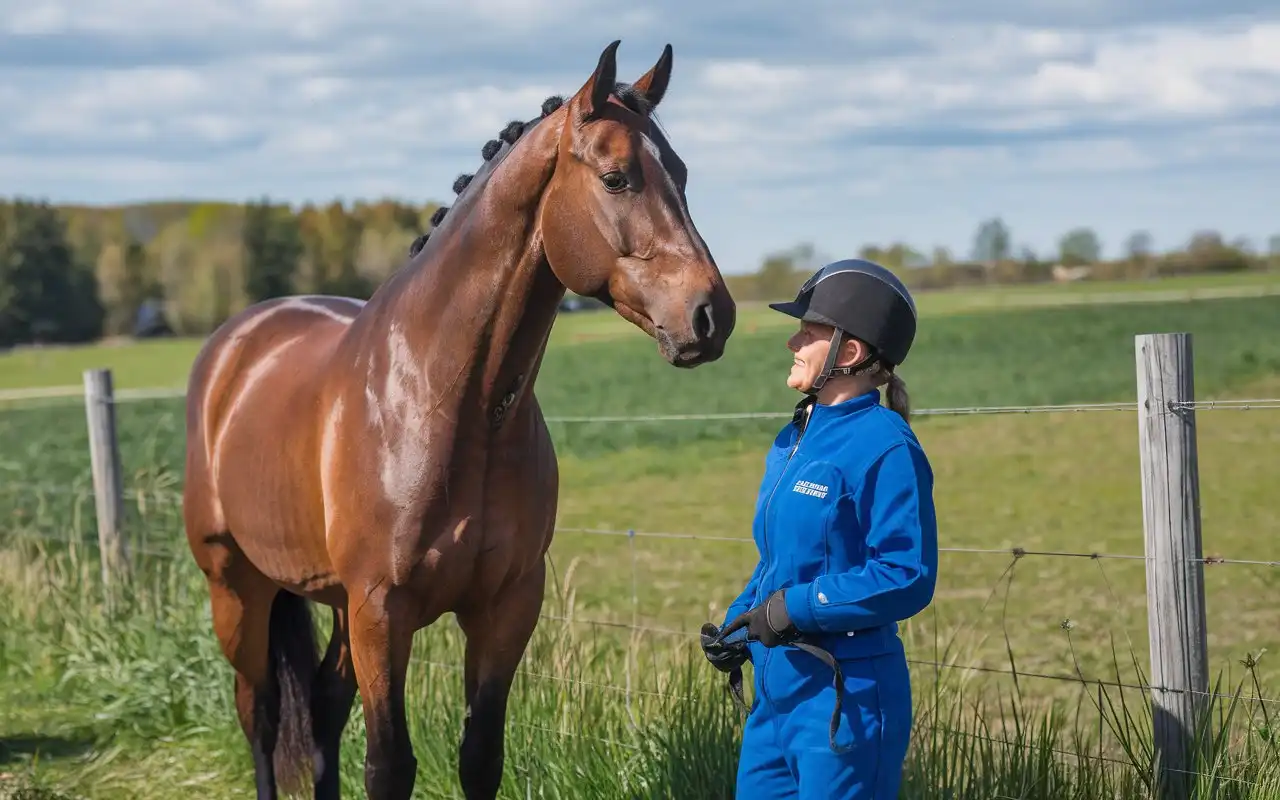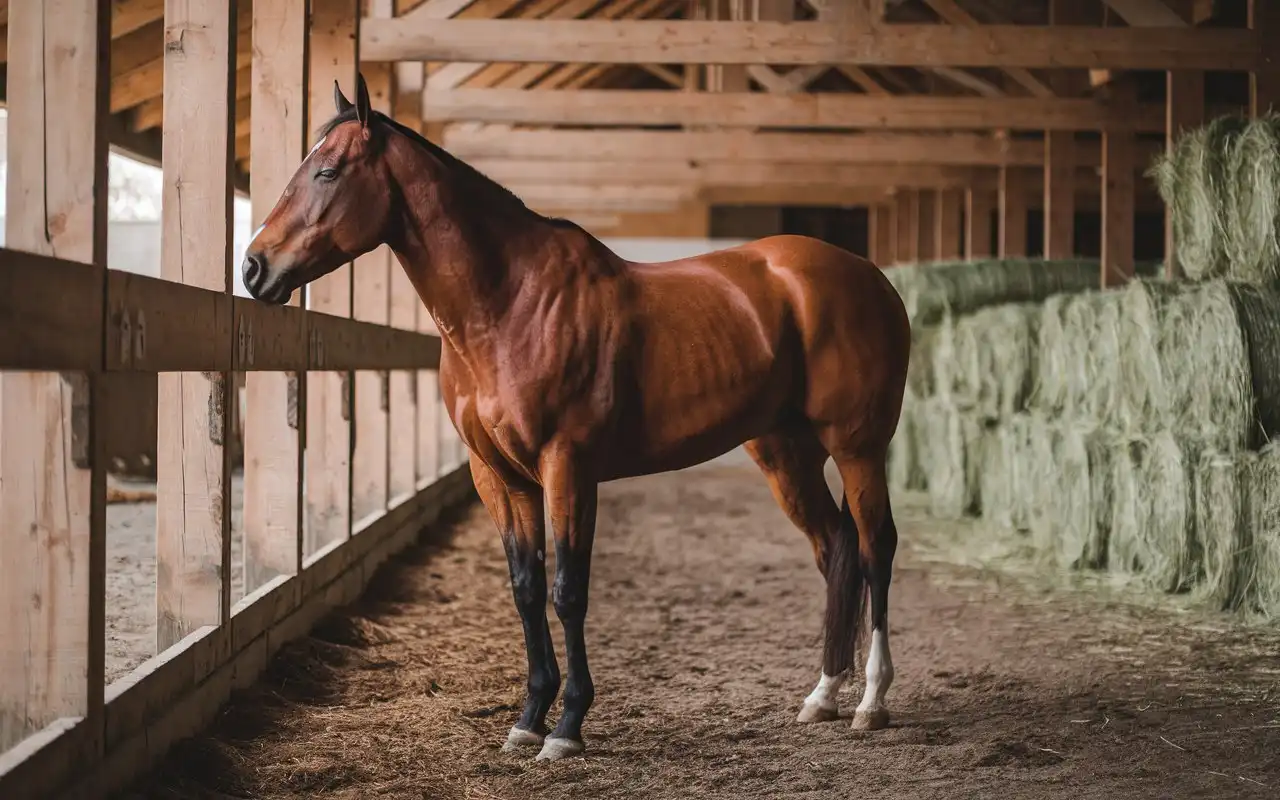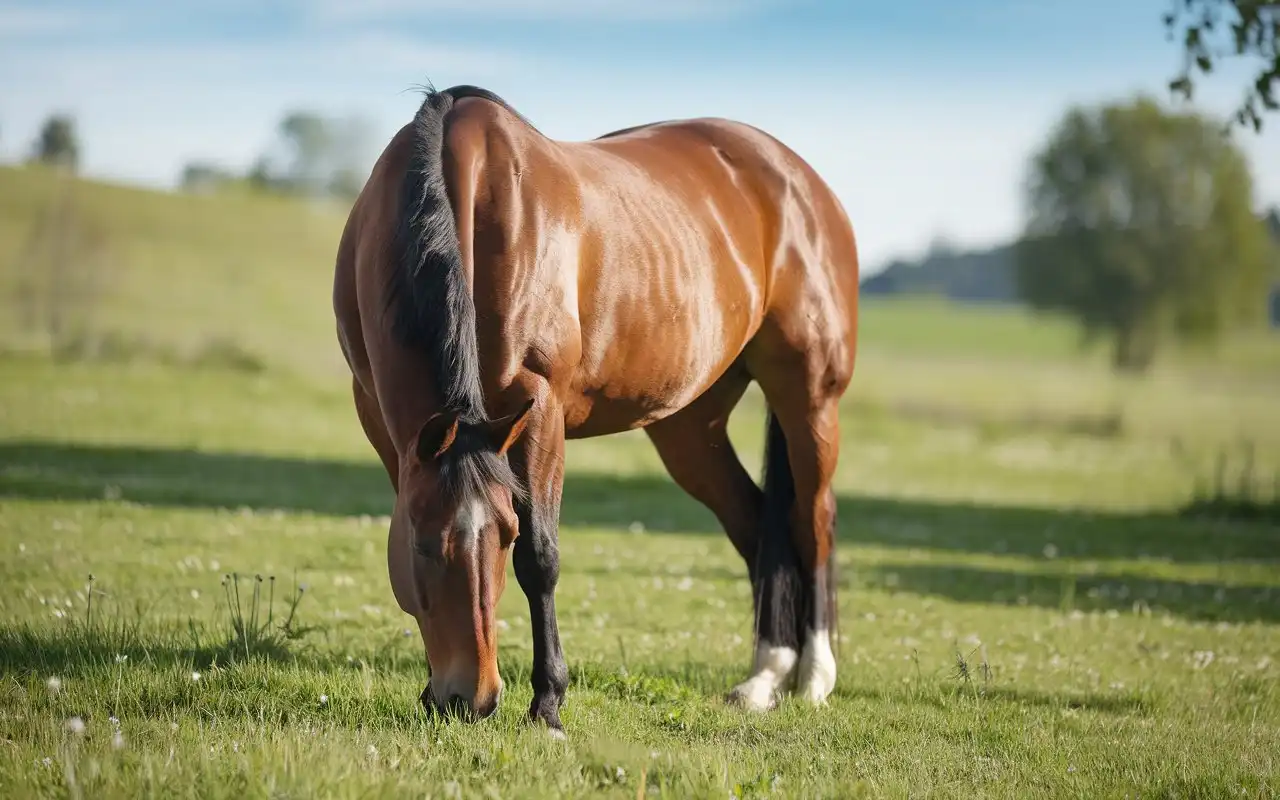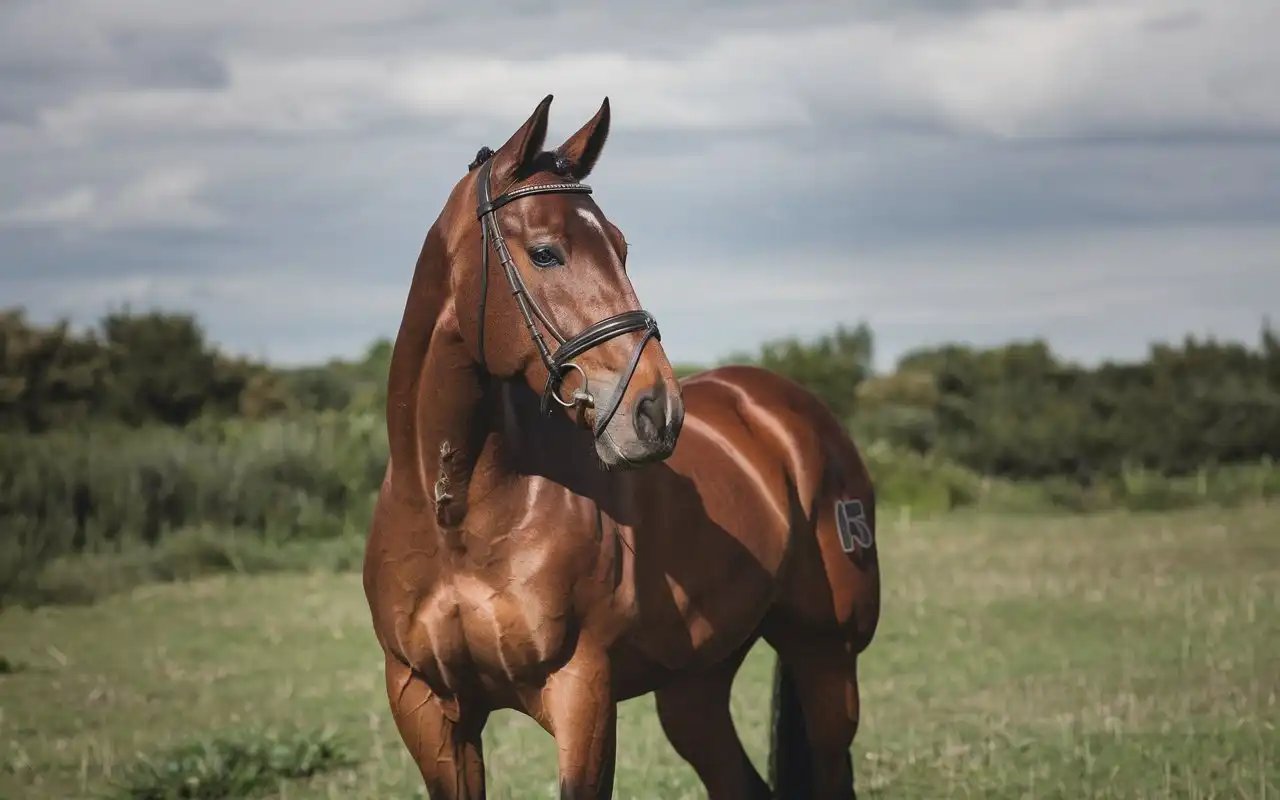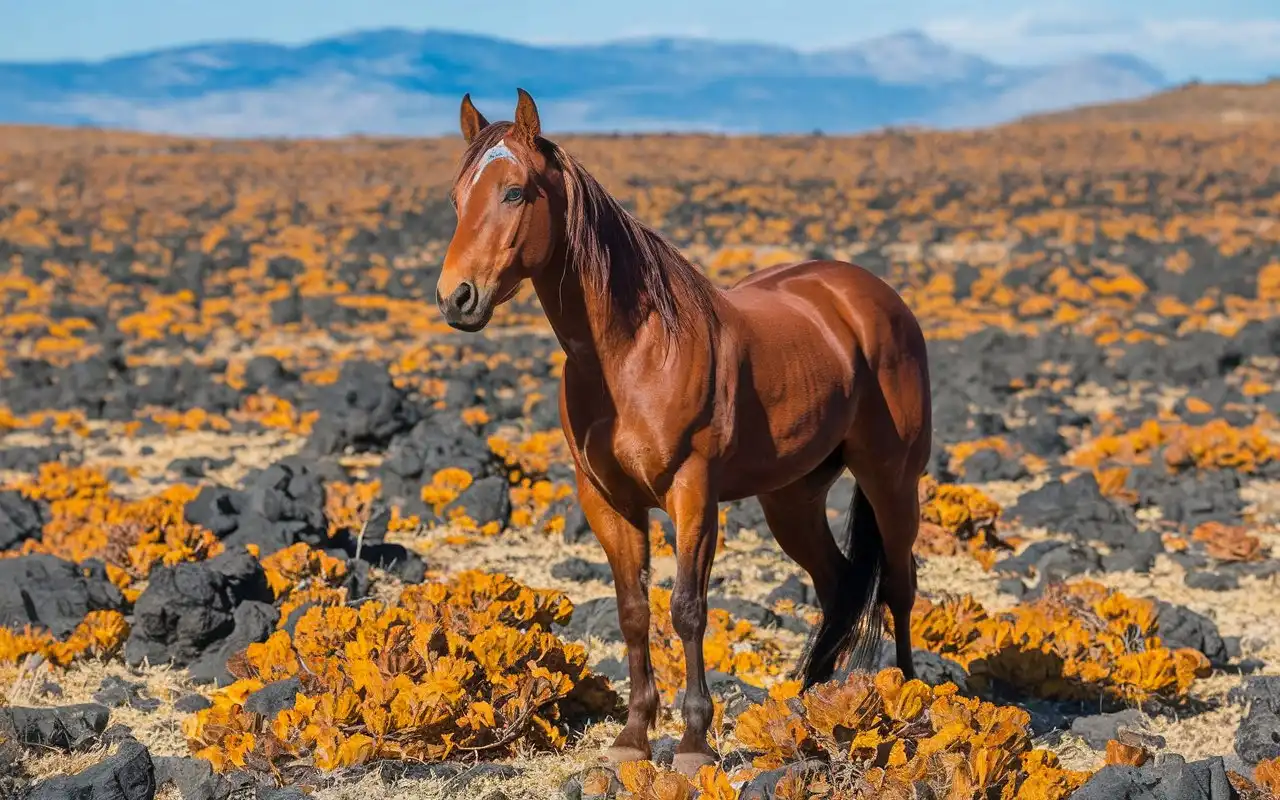Ergots on horses are small, horn-like growths located on the back of their fetlocks. Ergots may seem unimportant. But, they can reveal much about your horse’s health. But what are they? And why do they matter? Understanding these features is essential for every horse owner. Ergots are thought to be remnants of an ancient time when horses had extra toes. Their purpose is unclear today. But, keeping them clean and healthy helps your steed.
Table of Contents
Anatomy of a Horse’s Legs
The Function of Ergots on Horse Anatomy
Ergots are tiny, keratinized growths found near the fetlocks of most horses. They have no clear function today. But, they are part of the horse’s evolution, like leg chestnuts.
Other Features of a Horse’s Leg
Horses’ legs are wonders of biology. They have tendons, ligaments, and bones built for speed and endurance. Understanding how each part, including ergots, fits into the anatomy helps you care for your horse.

Identifying Ergots on Horses
Where to Look for Ergots
Ergots are located on the backside of a horse’s fetlocks, often hidden under long hair. Running your fingers along this area can help you identify their size and condition.
What Do Ergots Look Like?
They vary in appearance, often resembling small, rough nodules. Some are tiny and almost unnoticeable, while others can grow larger and require maintenance.
Are Ergots Harmful to Horses?
Common Myths About Ergots On Horses
Many myths surround ergots on horses, leading to unnecessary concern among horse owners. One common belief is that ergots cause pain or hinder a horse’s performance. In reality, these small growths are completely natural and rarely interfere with a horse’s movement or comfort. Ergots don’t have nerves or blood supply, which means they are painless to the horse. Some owners even mistake ergots for abnormalities, but they’re as normal as a horse’s mane or tail.
Knowing the true nature of ergots can help owners. They can then focus on care, not on unwarranted worries. It’s also worth noting that not all horses have prominent ergots. In some cases, they’re so small that they go unnoticed during routine grooming.
When to Be Concerned
Although ergots are harmless in most cases, there are exceptions where they can become problematic. Overgrowth is the most common issue, where ergots grow excessively and may irritate the surrounding skin. This can happen if they are neglected during grooming, particularly in horses with feathered legs that obscure them.
Watch out for signs such as redness, swelling, or discomfort around the ergots. If your horse starts reacting negatively during grooming or shows signs of irritation in this area, it’s time to inspect the ergots more closely. In extreme cases, consult a veterinarian to rule out underlying skin conditions.
Maintaining Healthy Ergots
Grooming Tips for Ergots on Horses
Proper grooming is essential for keeping your horse’s ergots in check. Begin by inspecting the fetlock area during your daily grooming routine. Use your hands to feel for the size and texture of the ergots, especially if they are hidden by thick leg hair.
Brush the area gently with a soft-bristled brush to remove dirt, mud, or debris that might accumulate around the ergots. For horses with feathered legs, part the hair and clean them. This prevents trapped moisture or dirt, which can cause skin irritation.
Tools You’ll Need
Having the right tools makes grooming and ergot maintenance easier. In addition to a soft brush, keep curved trimming scissors or a hoof knife on hand for managing overgrowth. Clippers can trim the long hair around the fetlocks. This improves visibility when inspecting ergots. Always ensure your tools are clean and sharp to avoid accidental injuries to the horse or yourself.
Ergots vs. Chestnuts: What’s the Difference?
Location and Appearance
Both ergots and chestnuts are keratinized growths on a horse’s legs. They differ in location and appearance. Ergots are small, round, or elongated growths found on the back of the fetlocks. They often feel like small pebbles under the skin and are sometimes obscured by hair.
Chestnuts, on the other hand, are located higher up on the legs, near the knees of the front legs and the hocks of the hind legs. They are flat, irregularly shaped patches that resemble hardened calluses. Chestnuts are typically larger and more noticeable than ergots.
Practical Differences in Care
Care for chestnuts and ergots involves occasional trimming to prevent overgrowth. However, chestnuts grow faster and may require more frequent attention. Ergots, due to their smaller size, are easier to manage and often require less maintenance. Despite these differences, both should be included in your grooming routine to ensure your horse’s comfort.
Preventing Issues with Ergots
Daily Leg Inspections
Regular inspections are your first line of defense against issues with ergots. While grooming, run your hands along your horse’s legs. Feel for any irregularities. This is particularly important in horses with thick or long leg hair, where ergots might be hidden.
If you see overgrowth, redness, or swelling, address it at once to prevent complications. Routine inspections not only help maintain healthy ergots but also allow you to detect other potential leg issues early.
Significance of Diet in Skin and Hair Quality
A horse’s diet plays a vital role in maintaining healthy ergots. Keratin, which forms ergots, depends on essential nutrients. These are made up of biotin, zinc, and omega-3 fatty acids. These nutrients promote healthy skin and hair. They reduce dryness and irritation around the fetlocks.
A balanced diet, rich in high-quality forage, is key. Use supplements if needed. It will maintain your horse’s skin and coat in good condition. This, in turn, helps their ergots.
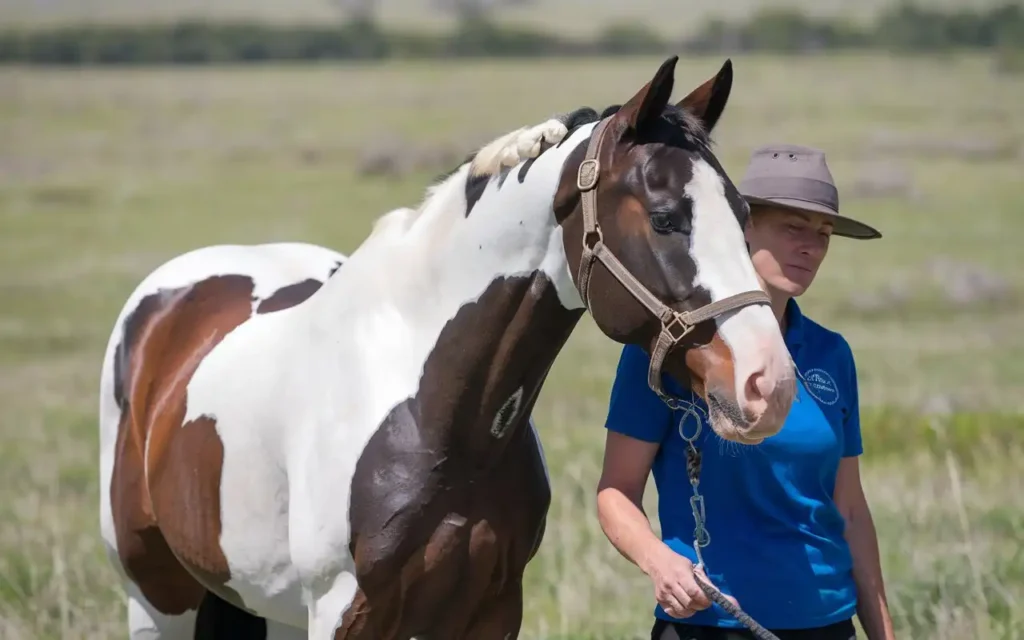
Common Problems Associated with Ergots
Overgrowth of Ergots On Horses
Overgrown ergots are the most common issue horse owners encounter. Some horses have larger ergots by nature. Neglecting to groom them can cause excessive growth. Overgrowth can lead to discomfort, particularly if the ergots snag on objects or rub against the skin.
Skin Irritations Around Ergots
Skin irritation is another potential problem. If dirt, moisture, or mud trap ergots, the skin may become red, swollen, or itchy. This is particularly common during wet or muddy seasons. Regular cleaning and grooming prevent these issues and keep the area around the ergots healthy.
How to Remove Overgrown Ergots Safely
Steps to Trim Ergots Properly
If your horse’s ergots have grown too long, trimming them safely is essential. Follow these steps to ensure the process is comfortable for your horse and stress-free for you:
- Prepare Your Tools: Use curved trimming scissors, a sharp hoof knife, or similar tools. Ensure they’re clean and sharp to avoid jagged cuts.
- Calm the horse: Make sure your horse is relaxed and standing on level ground. A stressed horse might fidget, making the task harder and potentially dangerous.
- Clean the area: Use a soft brush to remove any dirt or debris around the ergots. This ensures a clear view of the area and reduces the risk of infection.
- Trim Carefully: Gently snip away small sections of the ergot. Don’t cut too close to the skin. Ergots have no nerve endings, so trimming won’t hurt. But cutting too deeply can irritate the surrounding skin.
- Smooth the Edges: Use a file to smooth rough edges if necessary, especially for larger ergots.
- Apply a moisturizer: If the area appears dry or cracked, apply a horse-safe moisturizer to maintain skin health.
When to Call a Professional
If the ergots are overgrown, or if you’re uncomfortable trimming them, call a farrier or equine vet. Professionals have the experience and tools to handle the task safely and effectively, ensuring no harm comes to your horse.
Ergots on Horses and Seasonal Changes
How Weather Affects Ergots
The seasons can significantly impact the condition of a horse’s ergots. In wet or muddy weather, dirt and moisture can accumulate around the fetlocks, leading to the softening of the ergots. While this might make trimming easier, it also increases the risk of skin irritation or infection.
In dry or cold conditions, ergots may harden and crack, making them more prone to overgrowth. Seasonal grooming adjustments are necessary to keep your horse’s legs healthy year-round.
Special Considerations in Winter and Summer
Winter Care: In colder months, longer fetlock hair can hide ergots. This makes inspections harder. Muddy or snowy environments may also lead to buildup around the legs, requiring frequent cleaning.
Summer Care: In hot weather, sweat and dust can accumulate, potentially irritating the skin around the ergots. Regular washing and brushing are essential to prevent these issues. Pay extra attention during fly season, as irritated skin can attract flies, further aggravating the area.
Ergots in Different Horse Breeds
Do All Horses Have Ergots?
Yes, most horses have ergots, but their prominence varies greatly between breeds and even individual horses. Some breeds, like Thoroughbreds, may have very small, almost imperceptible ergots. Others, such as draft breeds with feathered legs, often have larger and more noticeable ergots.
Breeds with Prominent Ergots
Horses with heavy feathering, such as Friesians and Clydesdales, tend to have more prominent ergots. The thick hair around their fetlocks can trap moisture and debris, requiring extra care during grooming. On the other hand, lighter breeds with less leg hair often require less maintenance for their ergots.
Signs of a Healthy Horse Leg
Skin and Hair Condition
Healthy horse legs are characterized by smooth, clean skin and shiny, untangled hair. Pay attention to the area around the fetlocks; it should be free of redness, swelling, or flaky patches. Proper grooming and nutrition play a significant role in maintaining skin and hair health.
Free Movement and Flexibility
A healthy horse moves effortlessly, with no signs of stiffness or discomfort in the legs. If your horse is hesitant, lame, or moving oddly, it might have a leg, fetlock, or hoof issue unrelated to ergots. Regular monitoring helps ensure early detection of problems.

Ergots and Hoof Care
How Ergots Tie into Hoof Maintenance
Ergots and hooves are both made of keratin and require regular care to prevent overgrowth or damage. While ergots don’t serve a functional purpose, neglecting them can lead to discomfort or irritation. Pairing hoof maintenance with ergot care ensures your horse’s entire leg is healthy and comfortable.
Pairing Grooming with Farrier Visits
Farriers often address minor ergot overgrowth during routine hoof care visits. If you’re unsure about trimming ergots yourself, mention it during your horse’s farrier appointment. Their expertise ensures the job is done correctly without causing harm.
Ergots in Older Horses
Aging and Its Effects on Ergots
As horses age, their skin, hair, and keratin growth may change. Ergots might harden or become more prone to cracking in older horses. Also, senior horses often have reduced mobility. This can make grooming harder.
Special Care for Senior Horses
Older horses benefit from gentler grooming routines. Use softer brushes and take extra care when inspecting their legs for signs of overgrown ergots or irritation. Regular farrier visits are even more critical for senior horses to ensure their legs and hooves remain in good condition.
Conclusion
Ergots on horses are natural, often overlooked features that play a small but important role in overall leg health. By understanding what they are, how to identify them, and how to care for them, you can keep your horse comfortable and healthy. Routine maintenance, feeding, and check-ups will stop complications. They will ensure your steed thrives in every season.

